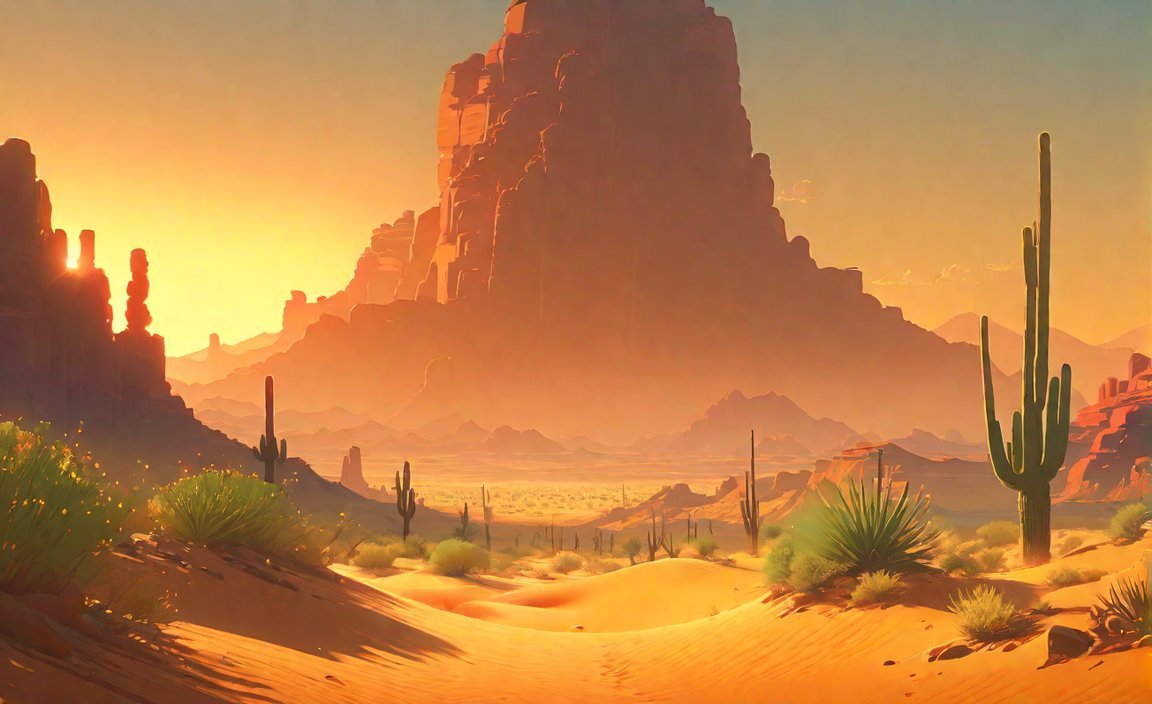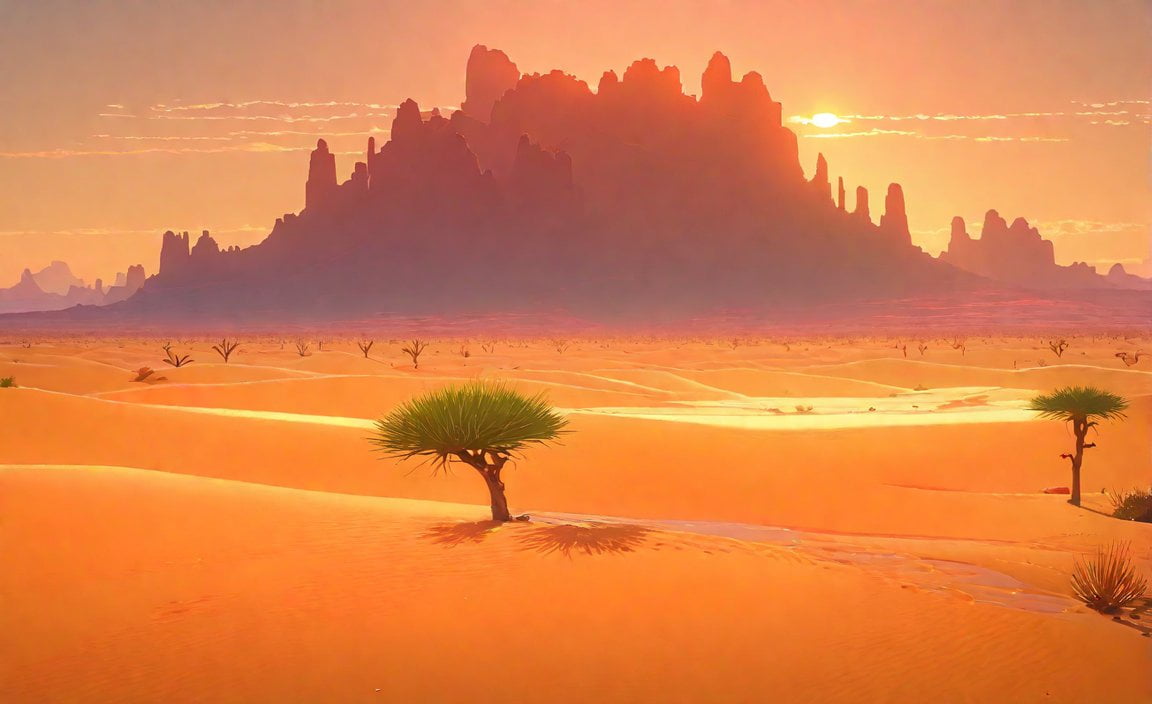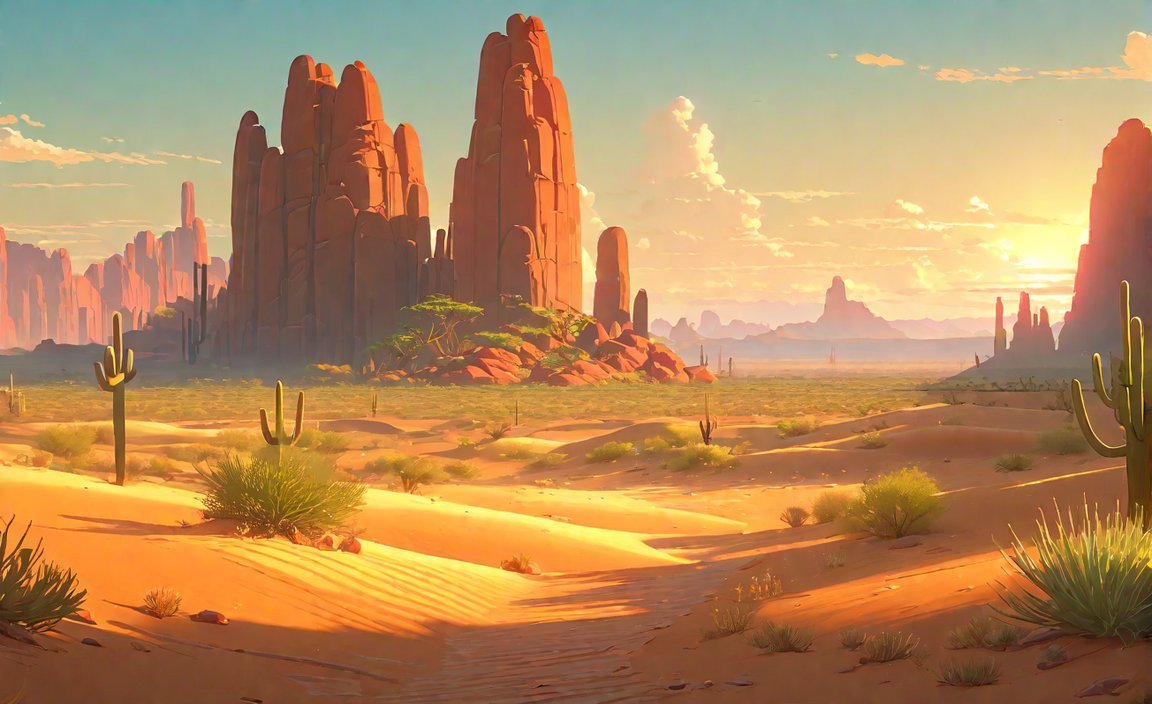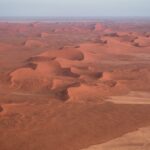Immerse yourself in the captivating realm of the Sonoran Desert, as we embark on a journey to unravel its countless treasures and unveil the mesmerizing wonders it holds. Delve into this arid wonderland, where breathtaking beauty collides with austere conditions, and where a myriad of fascinating facts awaits discovery. From its resilient flora and fauna to the delicate balance of its ecosystem, join us as we unveil the mysteries of the Sonoran Desert, sharing remarkable insights that will undoubtedly leave you in awe of this extraordinary natural marvel.
Key Takeaways:
- The Sonoran Desert is the largest desert in North America, spanning two countries and four US states.
- It is the hottest desert in North America and the wettest desert in the world.
- The Sonoran Desert is home to the world’s largest cactus, the saguaro cactus, and the only place where the organ pipe cactus grows.
- It has unique wildlife, such as the Sonoran pronghorn, the venomous Gila monster, and over 400 species of birds.
- The Sonoran Desert has healing hot springs, ghost towns, and a rich history of the Wild West.
- It is an outdoor paradise for camping, hiking, biking, and exploring.
Facts About Sonoran Desert

The Sonoran Desert, a unique arid wonderland stretching across two countries and four US states, holds a plethora of fascinating facts that make it an intriguing destination for explorers and nature enthusiasts. From its distinctive flora and fauna to its rich history and outdoor allure, the Sonoran Desert offers a captivating tapestry of natural wonders waiting to be discovered.
The Largest and the Wettest
The Sonoran Desert proudly claims the title of being the largest desert in North America. Spanning a vast expanse of land, it encompasses regions in the United States and Mexico, and encompasses both dry and arid terrain. But what sets the Sonoran Desert apart is its duality – it is not only the largest, but also the wettest desert in the world. Despite its reputation as an arid landscape, it receives more rainfall than any other desert around the globe.
The Giants of the Desert
When it comes to the plant life of the Sonoran Desert, the giants reign supreme. This unique ecosystem is home to the world’s largest cactus, the saguaro cactus, whose towering presence can reach up to 40 feet in height. These majestic giants, with their impressive arms reaching for the skies, offer a surreal sight against the desert backdrop.
Apart from the saguaro cactus, the Sonoran Desert is also the only place where the organ pipe cactus thrives. With multiple slender arms stretching upwards, resembling the pipes of an organ, these cacti create a mesmerizing visual spectacle throughout the desert.
Wildlife Wonders
As nature’s playground, the Sonoran Desert boasts an incredible array of wildlife, both unique and diverse. From the fast and agile Sonoran pronghorn, one of the rarest mammals in North America, to the venomous and mysterious Gila monster, this desert ecosystem is teeming with hidden wonders.
Birdwatchers are in for a treat, as the Sonoran Desert provides a sanctuary for over 400 species of birds. From colorful hummingbirds to majestic raptors, the sky above the desert is adorned with the grace and beauty of these feathered creatures.
History and Healing
Beyond its natural wonders, the Sonoran Desert holds a rich history and offers healing oases to soothe the weary soul. Exploration of the desert’s vast expanse will lead adventurers to ghost towns that once thrived during the era of the Wild West. These remnants of the past offer a glimpse into the region’s historical significance.
The Sonoran Desert is also home to healing hot springs, providing a serene and tranquil environment for relaxation and rejuvenation. These natural hot springs, nestled amidst the arid landscape, offer a therapeutic experience amidst the desert’s harsh elements.
An Outdoor Paradise
For outdoor enthusiasts, the Sonoran Desert is a paradise waiting to be explored. It offers a wealth of activities such as camping, hiking, biking, and countless opportunities for adventure. Whether you’re scaling desert peaks, traversing vast sand dunes, or trekking through scenic trails, the Sonoran Desert beckons adventurers with its open arms.
Here are some interesting facts you should know:
- Facts about Albania: Discover fascinating information about Albania, a captivating country with a rich history and vibrant culture.
- Facts on Chess: Uncover intriguing facts about chess, a game of strategy and intellect that has captivated minds for centuries.
- Facts Central Park: Step into the heart of New York City and explore Central Park, a remarkable oasis of natural beauty with its own collection of fascinating facts.
- Facts about Temple of Artemis: Immerse yourself in the wonders of the ancient world as we dive into surprising facts about the Temple of Artemis, one of the Seven Wonders of the Ancient World.
- Facts about Uganda: Embark on a virtual journey to Uganda, a land teeming with breathtaking landscapes, unique wildlife, and enthralling cultural heritage.
- Facts about real estate: Delve into the world of real estate and discover intriguing facts about this dynamic industry that shapes our lives and communities.
- Facts about the hieroglyphics: Decode the mysteries of ancient Egypt as we explore fascinating facts about hieroglyphics, the ancient Egyptian writing system.
- Facts about the beach: Dive into the mesmerizing world of beaches and uncover captivating facts about these sun-kissed paradises where sand, sea, and serenity collide.
Feel free to click on any of the links above to satisfy your curiosity and expand your knowledge!
Impact of Human Activities
Human activities have had a significant impact on the Sonoran Desert and its delicate ecosystem. These activities, driven by human needs and desires, have often resulted in negative consequences for the desert’s wildlife and natural resources.
Land Degradation and Habitat Destruction
Grazing animals play a major role in the destruction of desert plants and animals. As they consume vegetation, they disturb the fragile balance that exists in the Sonoran Desert. Overgrazing can lead to soil erosion, which reduces the desert’s ability to support plant life and creates barren areas.
Gold mining, an activity that requires the use of potassium cyanide, can also have detrimental effects on the Sonoran Desert. The utilization of this toxic chemical can contaminate soil and water, ultimately poisoning desert wildlife and causing long-term damage to the ecosystem.
Another destructive human activity in the Sonoran Desert is the use of off-road vehicles. The reckless driving and exploration by these vehicles can irreversibly damage delicate desert habitats. Disturbed soil and crushed vegetation contribute to the degradation of the desert landscape and disrupt critical habitats for plants and animals.
Disruption of Sensitive Habitats
Oil and gas production in the Sonoran Desert has also proven to be disruptive to the delicate balance of the ecosystem. The extraction of these resources often requires the construction of infrastructure and the use of heavy machinery, altering the natural landscape. This displacement and disturbance of habitats can have severe impacts on the flora and fauna that call the desert home.
In addition, the alteration and destruction of important riparian areas have had a profound impact on the Sonoran Desert. These areas, characterized by the presence of water, provide essential resources for both plants and animals. However, human activities such as damming rivers, diverting water, and excessive groundwater pumping have resulted in the disappearance of these crucial habitats. Consequently, the scarcity of water is causing species that have adapted to desert life to disappear.
Key Takeaways:
- Grazing animals, gold mining, and off-road vehicles all contribute to the destruction of the Sonoran Desert’s delicate ecosystem.
- Oil and gas production disrupts habitats and alters the natural landscape of the desert.
- Important riparian areas are being altered and destroyed, impacting the availability of water and leading to the disappearance of species.
Sources:
1. National Geographic: source
2. Biological Diversity: source
Adaptations of Animals and Plants in the Sonoran Desert: Surviving the Heat and Lack of Water
The Sonoran Desert is a mesmerizing arid landscape located in southwestern North America. It is a habitat boasting a diverse range of plant and animal species that have evolved remarkable adaptations to survive the extreme heat and limited water availability. In this article, we will delve into the fascinating world of adaptations of desert organisms, exploring the strategies these resilient creatures employ to cope with the challenges posed by the desert environment.
Animal Adaptations
Behaviors and Physiological Characteristics
For animals in the Sonoran Desert, survival is no easy feat. However, they have developed unique behaviors and physiological adaptations that enable them to thrive. One key adaptation is their ability to be crepuscular or nocturnal, making them most active during the cooler hours of dawn and dusk. By avoiding direct exposure to the scorching sun, these animals conserve water and energy.
In addition to behavioral adaptations, desert animals possess intriguing physiological characteristics. For example, species like the Kangaroo Rat have highly concentrated urine, allowing them to efficiently conserve water. Others, such as the Gila Monster, possess fat-storing capabilities in their tails, providing them with an energy reserve during times of food scarcity.
Reptile Adaptations
Reptiles in the Sonoran Desert have truly mastered survival in this harsh environment. Lizards and snakes, among other reptiles, exhibit specialized skin structures that minimize water loss. They boast scales or plates that create a protective barrier against evaporation. Furthermore, these reptiles are skilled at regulating their body temperature through behavioral thermoregulation, reducing heat stress and conserving vital energy.
Plant Adaptations
Desert plants in the Sonoran Desert have evolved three key strategies to endure the harsh conditions: succulence, drought tolerance, and drought avoidance. Each strategy aids these plants in thriving while minimizing water loss.
Succulence
Succulent plants, such as cacti and agaves, have adapted to survive extended periods of drought. They possess thick, fleshy stems and leaves that store water, providing a valuable reservoir for these arid-loving plants. Additionally, the spines or thorns of these succulents help shade the plant and create a microclimate, reducing evaporation.
Drought Tolerance
Many desert plants, including mesquite trees and creosote bushes, exhibit remarkable mechanisms for tolerating prolonged drought conditions. These plants possess deep root systems that tap into groundwater sources, allowing them to access water even during dry periods. Additionally, they have waxy leaves or hairy coatings that minimize water loss through evaporation.
Drought Avoidance
Certain desert plants have developed strategies to avoid drought altogether. Known as ephemerals, these plants have short life cycles and quickly complete their life cycle during periods of rainfall. They produce seeds capable of remaining dormant until favorable conditions occur, enabling rapid germination and completion of their life cycle before water becomes scarce again.
Key Takeaways:
- Animals and plants in the Sonoran Desert have evolved unique adaptations to survive the extreme heat and lack of water.
- Desert animals demonstrate behaviors and physiological characteristics that aid in water conservation and energy efficiency.
- Reptiles have specialized skin structures and behavioral thermoregulation techniques to minimize water loss and manage body temperature.
- Desert plants employ strategies such as succulence, drought tolerance, and drought avoidance to thrive in arid conditions.
Conservation Efforts and Challenges
The Sonoran Desert is a remarkable ecosystem that is home to a diverse array of plants and animals. However, the unique wildlife and delicate balance of this arid landscape are facing numerous challenges due to human activities. Conservation efforts are crucial to protect the endangered desert species and preserve the Sonoran Desert’s fragile ecosystem.
Grazing, Mining, and Off-road Vehicles:
One of the major challenges facing the Sonoran Desert is the destructive impact of grazing animals, gold mining, and off-road vehicles. Grazing animals disturb the desert’s fragile balance, leading to soil erosion and creating barren areas. This disrupts the habitat of many desert species and can lead to their decline.
Gold mining, which often involves the use of potassium cyanide, poses a significant threat to the ecosystem. The mining process contaminates soil and water, causing long-term damage and reducing the quality of habitat for desert plants and animals.
Off-road vehicles also contribute to the destruction of delicate desert habitats. They crush vegetation and disturb the soil, causing irreversible damage and disrupting the natural ecosystem.
Oil and Gas Production:
Oil and gas production in the Sonoran Desert further disrupts the ecosystem. The construction of infrastructure and the use of heavy machinery can have severe impacts on desert plants and animals. The extraction process alters the natural landscape and poses a threat to the delicate balance of the ecosystem.
Alteration and Destruction of Riparian Areas:
Riparian areas, which are important habitats in the Sonoran Desert, are also at risk. Human activities such as damming rivers, diverting water, and excessive groundwater pumping lead to the disappearance of crucial habitats and water scarcity. This loss of riparian areas has severe impacts on the flora and fauna that rely on these habitats for survival.
Threat to Desert Adapted Species:
The disappearance of species adapted to desert life is a significant concern in the Sonoran Desert. Human activities and habitat loss put these unique and specialized species at risk of extinction. Conservation efforts are urgently needed to protect these desert-adapted species and ensure their survival for future generations.
Key Takeaways:
- Grazing animals, gold mining, and off-road vehicles contribute to the destruction of the Sonoran Desert’s fragile ecosystem.
- Oil and gas production in the desert disrupts the ecosystem through the construction of infrastructure and use of heavy machinery.
- Alteration and destruction of important riparian areas in the desert have severe impacts on flora and fauna.
- Damming rivers, diverting water, and excessive groundwater pumping lead to the disappearance of crucial habitats and water scarcity.
- Human activities are resulting in the disappearance of species adapted to desert life.
Sources:
1. The Sonoran Desert’s Surprises: Thriving Life In Extreme Conditions – This source provides information about the biodiversity in the Sonoran Desert and the adaptations of species to the extreme conditions.
2. Sonoran Desert Ecosystems – Rangeland Ecosystems of the Western US – This source explains the unique natural environments found in the Sonoran Desert and its importance as a rangeland ecosystem.

FAQ
Q1: What is the size of the Sonoran Desert and where is it located?
A1: The Sonoran Desert is the largest desert in North America and spans across two countries and four US states. It is located in the southwestern part of North America.
Q2: Is the Sonoran Desert the hottest desert in North America?
A2: Yes, the Sonoran Desert is indeed the hottest desert in North America. It experiences extreme temperatures due to its location and receives abundant sunlight.
Q3: Are there any unique species found in the Sonoran Desert?
A3: Yes, the Sonoran Desert is home to several unique species. It is where you can find the world’s largest cactus, the saguaro cactus, and the only place where the organ pipe cactus grows. It also has unique wildlife such as the Sonoran pronghorn, venomous Gila monster, and over 400 species of birds.
Q4: What are some recreational activities that can be enjoyed in the Sonoran Desert?
A4: The Sonoran Desert is an outdoor paradise for camping, hiking, biking, and exploring. It offers a wide range of activities for nature enthusiasts to enjoy the beauty of the desert and its unique ecosystems.
Q5: How is the Sonoran Desert affected by human activities?
A5: Human activities have negative impacts on the Sonoran Desert and its wildlife. Grazing animals can destroy desert plants and animals, while the use of potassium cyanide in gold mining can poison wildlife. Off-road vehicles also cause irreparable damage to desert habitats, and oil and gas production disrupt sensitive habitats. Additionally, the alteration and destruction of important riparian areas and the scarcity of water are causing species that have adapted to desert life to disappear.















